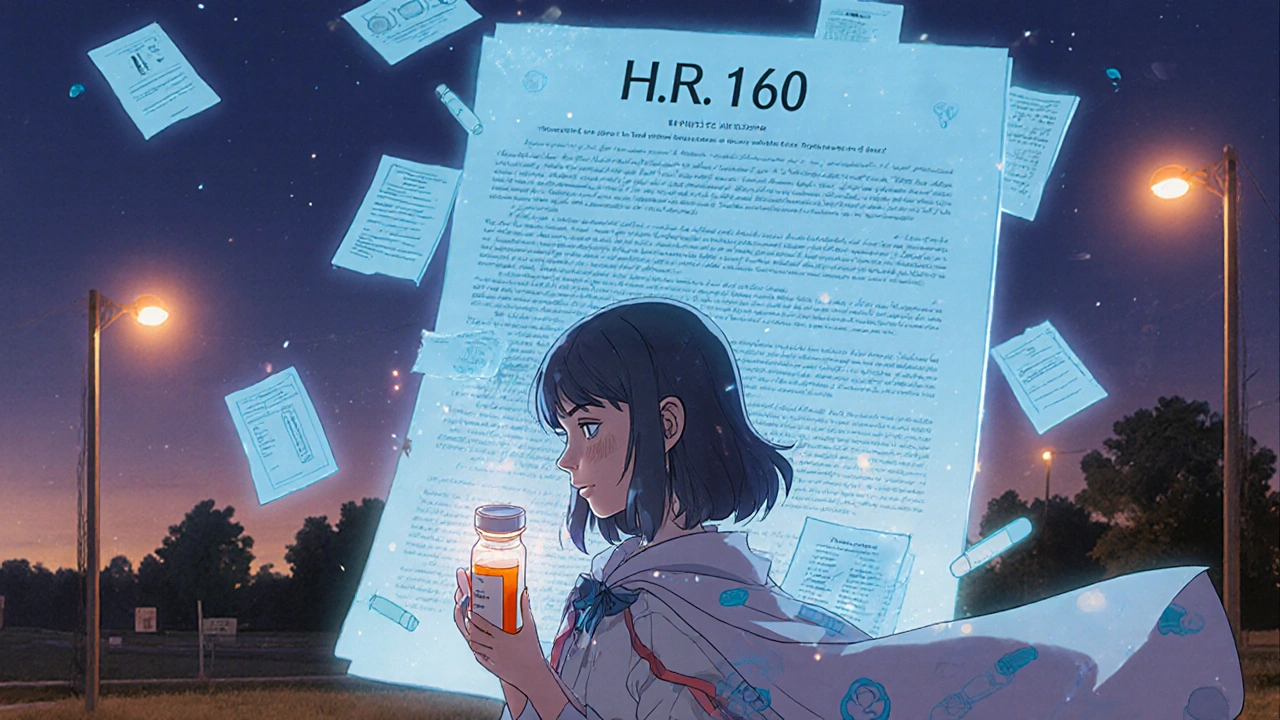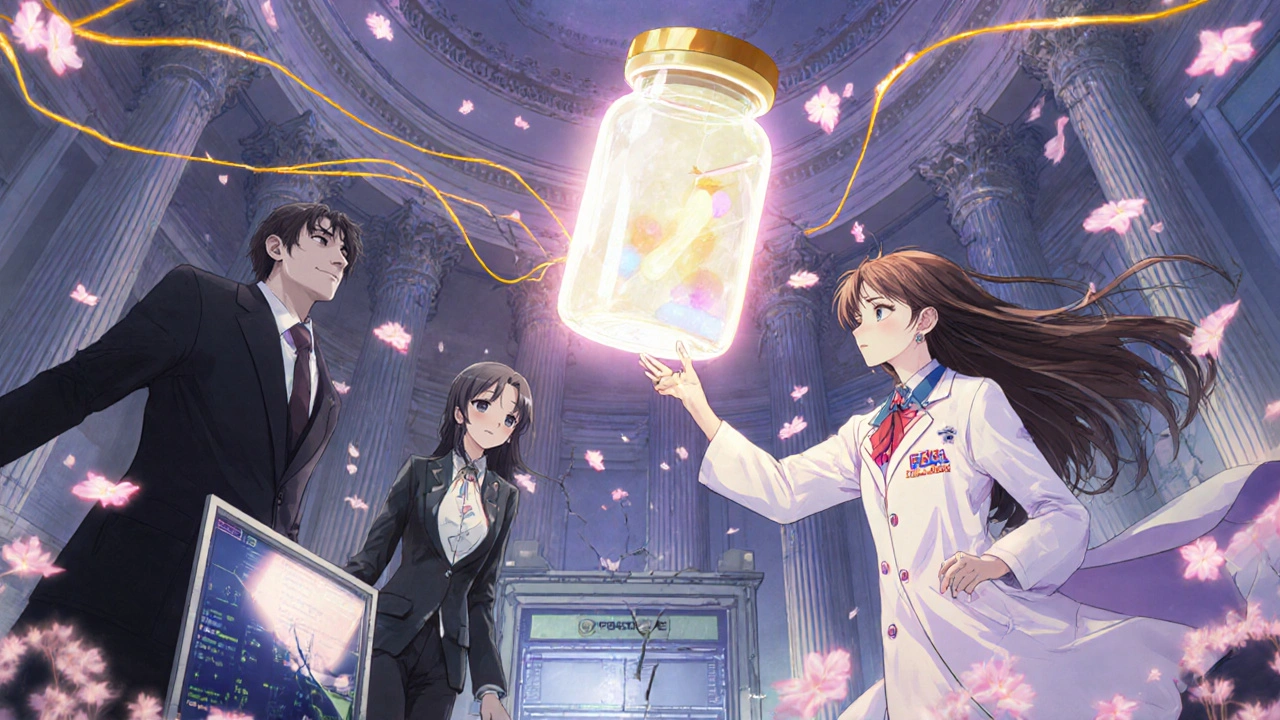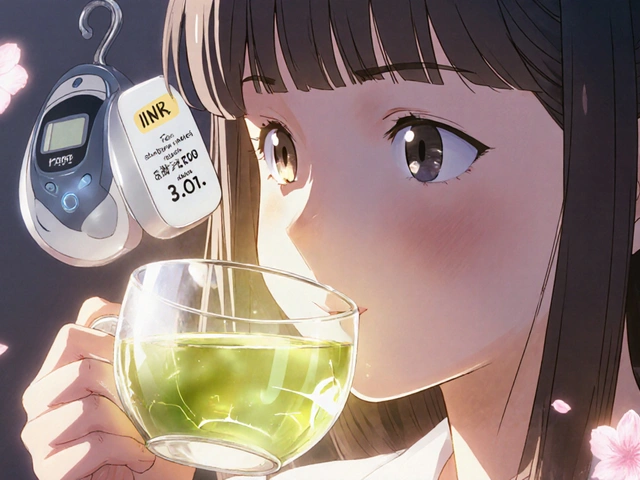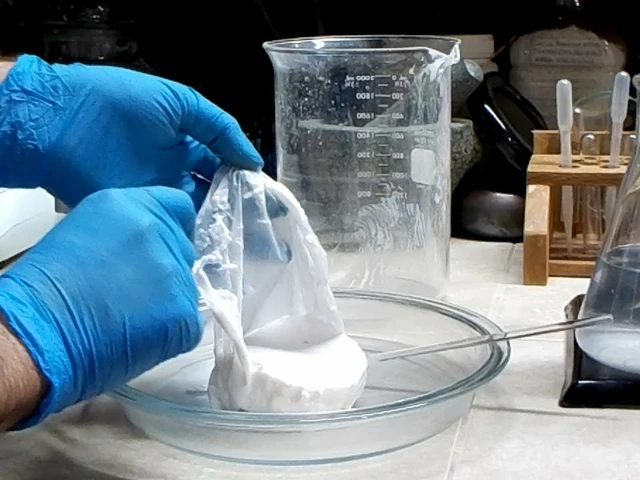As of November 2025, more than 287 drugs are in short supply across the U.S., with nearly half of them being critical medications for heart failure, cancer, seizures, and infections. Hospitals are rationing doses. Pharmacies are turning patients away. And doctors are forced to use less effective - or more dangerous - alternatives. Yet, Congress has introduced two bills meant to fix this. The problem? They’re stuck. And no one’s talking about why.
The Two Bills Trying to Fix Drug Shortages
The most direct attempt to tackle drug shortages is the Drug Shortage Prevention Act of 2025 (S.2665). Introduced by Senator Amy Klobuchar in August, this bill would require drug manufacturers to notify the FDA the moment they see a spike in demand for critical medicines. That sounds simple. But right now, companies don’t have to say a word until a shortage is already happening - and by then, it’s too late.
The idea is to catch problems early. If a factory in India suddenly can’t produce enough heparin because of a power outage, or a supplier in China runs out of active ingredient, the FDA should know before pharmacies start running dry. S.2665 doesn’t mandate new manufacturing. It doesn’t fund new plants. It just wants companies to speak up sooner. That’s it.
Meanwhile, the House is working on something different: the Health Care Provider Shortage Minimization Act of 2025 (H.R.1160). The title suggests it’s about doctors and nurses - and it is. But here’s the catch: no one has seen the full text. No committee has reviewed it. No public summary exists. All we know is the name. That’s not transparency. That’s silence.
Why These Bills Are Stuck
The U.S. government has been shut down since October 1, 2025 - the longest in history. That means the FDA can’t hire staff. The CDC can’t update data. The Senate committee that’s supposed to review S.2665? It’s not meeting. The House committee for H.R.1160? It doesn’t even have a chair because no one’s been confirmed.
Over 800,000 federal workers are furloughed. That includes the people who run the FDA’s Drug Shortage Portal - the very system S.2665 would rely on. Right now, that portal is glitchy. Some drugs listed as "in shortage" haven’t been updated since July. Others show as resolved when they’re not.
Even if the bills were perfect, they can’t move forward without funding. The Congressional Budget Office estimates S.2665 would cost $45 million a year to implement - just to train staff, update systems, and monitor notifications. That’s less than the cost of one F-35 jet. But in a shutdown where Congress is cutting $7.9 billion from foreign aid and $1.1 billion from public media, healthcare infrastructure is last on the list.

What’s Really Causing the Shortages?
It’s not just one thing. It’s a chain reaction.
Over 60% of drug shortages trace back to manufacturing delays. Most of the active ingredients in U.S. medications come from just two countries: China and India. A single flood, political protest, or regulatory inspection can break the whole chain. In 2025, a major API plant in Hyderabad shut down for three months after a safety violation. That knocked out five antibiotics used in hospitals nationwide.
Then there’s the profit problem. Generic drugs - the ones most often in shortage - make pennies per pill. Companies don’t invest in backup suppliers or extra inventory because there’s no financial reward. If you can make $0.02 per tablet and someone else can make it for $0.01, you lose. So you cut corners. You delay maintenance. You skip quality checks. And when something breaks, no one’s ready.
And don’t forget the workforce. There are 122 million Americans living in areas with too few primary care doctors. In rural states, patients drive 90 minutes just to get a prescription filled. When a drug runs out, there’s often no one to switch them to a safe alternative.
What’s Missing From These Bills
S.2665 is a good first step - but it’s not enough. It doesn’t require manufacturers to stockpile backup supplies. It doesn’t penalize companies that hide shortages. It doesn’t give the FDA power to fast-track approval for alternative suppliers. And it doesn’t touch the broken economics of generic drug manufacturing.
H.R.1160 might be the real game-changer - if we ever knew what it said. Is it about loan forgiveness for doctors who work in shortage zones? Is it about expanding nurse practitioner scope? Is it about fast-tracking visas for foreign-trained doctors? Without the text, we’re guessing. And in a public health crisis, guessing isn’t an option.
Compare this to what other countries do. In Canada, manufacturers must report potential shortages six months in advance. In the UK, the NHS has a centralized system that reroutes drugs between regions when one hospital runs out. The U.S. has nothing like that.

What Patients and Providers Are Saying
A survey by the American Medical Association in September 2025 found that 87% of doctors have had to delay or change treatment because of a drug shortage. One oncologist in Ohio told a reporter she had to use a less effective chemo drug because the standard one was unavailable - and the patient’s cancer progressed faster.
Hospitals are feeling it too. The American Hospital Association reported that 98% of hospitals had at least one critical drug shortage in Q3 2025. Some are using expired vials. Others are splitting doses. A few are turning patients away.
On Reddit, r/healthpolicy had over 140 posts in November alone with comments like: "I had to drive to three pharmacies before I found my insulin." Or: "My kid needs seizure meds. We’ve been out for two weeks. The doctor says to wait. But what if he has a seizure tomorrow?"
What Happens Next?
The Senate’s proposed continuing resolution - meant to keep the government open - doesn’t mention drug shortages once. The House has voted on over a dozen bills since October, but none of them touch healthcare supply chains.
If the shutdown continues past January 30, 2026, both S.2665 and H.R.1160 will die. They’ll expire with the 119th Congress. And the next chance won’t come until January 2027 - two full years from now.
That’s not policy. That’s negligence.
Patients don’t care if Congress is in session. They need their meds. Doctors don’t want to play guessing games with life-saving drugs. And manufacturers? They’ll keep cutting costs until the system breaks completely.
Right now, the only thing moving faster than the drug shortages is the clock.
What is the Drug Shortage Prevention Act of 2025?
The Drug Shortage Prevention Act of 2025 (S.2665) is a Senate bill that would require pharmaceutical manufacturers to notify the FDA as soon as they anticipate increased demand for critical drugs. The goal is to give regulators time to respond before shortages occur. It does not require new manufacturing, funding, or penalties - only earlier reporting. As of November 2025, it remains in committee with no further action.
Why isn’t H.R.1160 getting attention?
H.R.1160, the Health Care Provider Shortage Minimization Act of 2025, has no publicly available text, no committee assignment, and no sponsor details listed on official congressional websites. Without knowing what it contains, lawmakers, experts, and the public can’t evaluate or support it. Its silence makes it politically invisible, even though it may address the growing shortage of doctors and nurses.
Are drug shortages getting worse?
Yes. As of September 2025, the FDA listed 287 drugs in shortage, with 47% classified as critical - meaning they’re used to treat life-threatening conditions like cancer, heart disease, and severe infections. This is the highest number since tracking began. Manufacturing delays, global supply chain issues, and low profit margins on generics are the main drivers.
How does the government shutdown affect drug shortages?
The shutdown has halted nearly all FDA operations, including updates to the Drug Shortage Portal, inspections of manufacturing plants, and communication with drug companies. Over 800,000 federal workers are furloughed, including the staff who monitor drug supply chains. Even if a bill passes, there’s no one left to implement it.
What can patients do if their medication is unavailable?
If your drug is in short supply, contact your pharmacist and doctor immediately. Ask if there’s an approved alternative. Check the FDA’s Drug Shortages page for updates. Some hospitals and nonprofits have emergency supply networks. Never stop taking a medication without medical advice - even if you have to wait or switch brands.






Neoma Geoghegan
November 25, 2025 at 05:47
API supply chains are a single point of failure waiting to blow